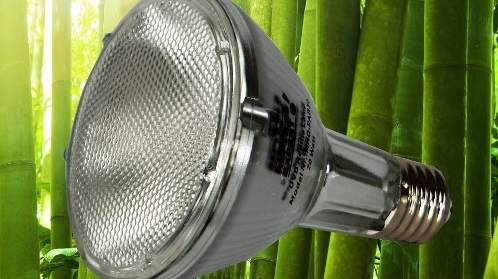We use cookies to make your experience better. To comply with the new e-Privacy directive, we need to ask for your consent to set the cookies. Learn more.
5 Reasons why UVB metal halide lamps are ideal for reptiles

Modern UVB metal halid lamps - also called UV lamps, HID lamps or UV spots - have the following significant advantages over all other terrarium lamps.
1) High UVB radiation
Modern UV metal halid lamps are primarily used because of the ultraviolet light that is important for vitamin D3 synthesis. They provide the necessary UVB radiation to form the important vitamin D3 in the skin. These UV lamps provide significantly more UVB radiation per watt than terrarium lamps of other types. The gas mixture in these lamps is geared to ideal UVB radiation thanks to a special composition. Vitamin D3 is essential for bone formation in reptiles and prevents the dreaded rickets (softening of the bones).
2) Unrivaled high brightness in the visible range
These UV lamps also produce very bright visible light. No other illuminant can achieve illuminance levels of around 100,000 lux in the terrarium. This is the value on a nice summer day at lunchtime. Illuminance (measured in lux) describes the luminous flux that hits an illuminated object. Simply put, you measure the illuminance (colloquially "brightness") under the light source. 100,000 lux and more can only be achieved in the terrarium with a stronger (150 watt) metal halide lamp. With a good 70 watt lamp at a distance of 30 cm you still get 70,000 lux. For comparison: In the shade (summer) a maximum of 10,000 lux is achieved, in a normal living room only 500 lux. Other technologies cannot be compared with metal vapor lamps. This excellent visible light also ensures well-being in the reptiles and thereby increases their health.
3) Very good heat radiation
As cold-blooded animals, reptiles are not only dependent on high UV and brightness values, but also on sufficient heat - this applies all the more to tropical or steppe/desert-dwelling species. Mediterranean species are also exposed to higher radiation intensities than we are used to in Central Europe. Therefore, a high level of heat radiation is necessary, which is the case with metal vapor lamps. The animals also look for their sunbathing spots in the great outdoors based on the brightness and warmth. In addition, the heat is also necessary for vitamin D3 synthesis. Vitamin D3 is only produced in the upper layers of the skin through UVB radiation AND heat.
4) Long-term stable light spectrum and best color rendering
But that's not all: the quality of the light spectrum and the color stability is much higher. Modern UV lamps have a ceramic burner instead of a normal quartz burner - this is the reason for the improvement in quality. This allows the reptiles to see their surroundings in a more natural way than with other UV lamps. This technology is also more robust and stable than the older comparison products. It also has a longer life expectancy.
5) Lower costs
This may sound strange at first glance, as these lamps require an electronic ballast that costs extra. But thanks to the electronic ballast, the lamp is started more gently - so it lasts longer - and during operation less power is consumed than with older terrarium lamps. Because modern lower wattage metal halide lamps produce better results than older technologies (eg: mixed light lamps or mercury vapor lamps). A 70 watt metal halide lamp obviously requires less power than a 160 watt mixed light lamp. However, the light quality is significantly better and the technology is therefore more economical. The additional costs for the electronical ballast are probably saved after one year.
In short: There is currently no better technology to provide UVB light, visible light and heat in the terrarium. Everything the animal needs for an ideal sunbathing spot. UVB light and heat are essential for vitamin D3 production.






